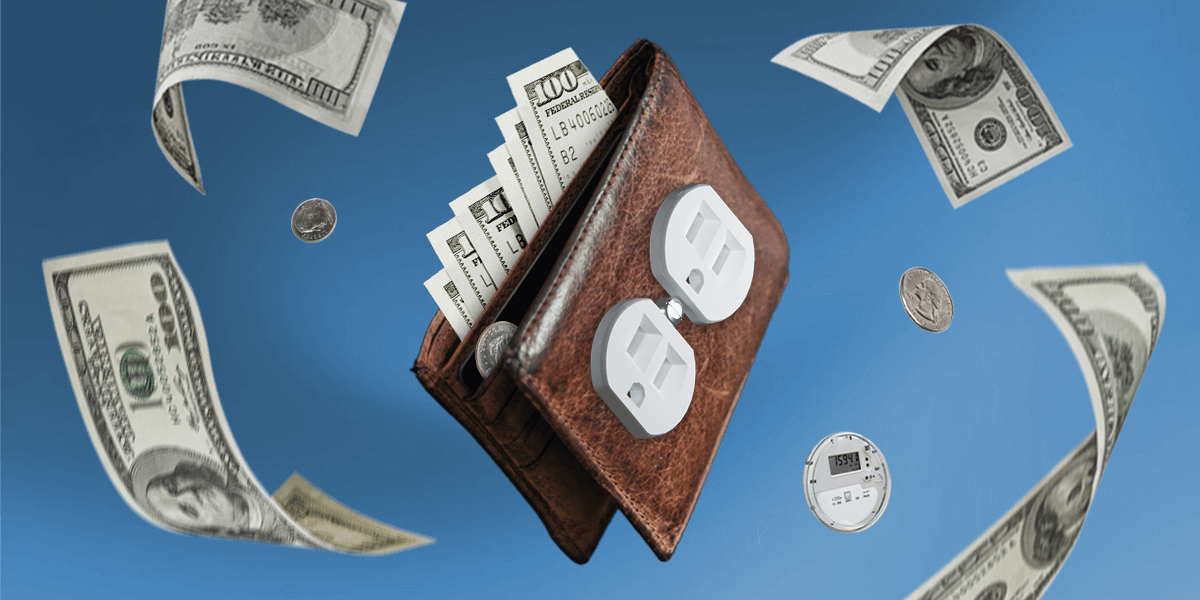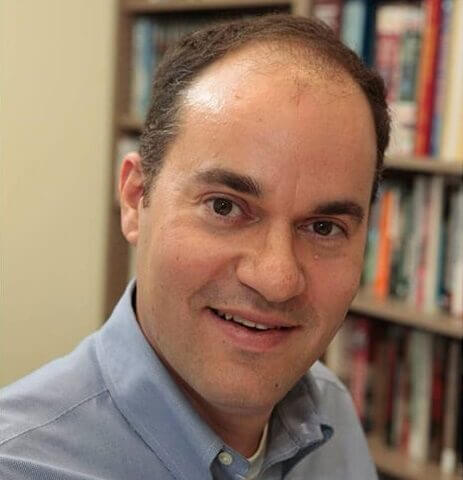
(Illustration/Sophie Shack; Images/iStock)
Americans want their electricity cheap, reliable and green, with 24/7 access 365 days a year. They also expect inexpensive water available, anytime, anywhere, even in the increasingly arid, sunbaked West.
Unfortunately, Americans’ desires clash with the reality of climate change.
With record-setting heatwaves, tornados, fires and cold spells becoming ever more commonplace, the power grid has grown less stable. When blackouts occur, especially on scorching or frigid days, the elderly are at risk, as are people in need of dialysis and other urgent medical services. Similarly, years of drought threaten the future economic growth and development of several western states and cities. In June, for instance, Arizona announced that it would halt new home construction in the area surrounding Phoenix because of a paucity of groundwater.
As the demand for electricity and water continues to soar along with the population, the need to conserve precious resources has never been greater. However, raising electricity and water prices when demand surges, say during a brutal heatwave, frustrates consumers, who accuse power and water companies of price gouging. Government mandated cutbacks often engender angry political backlashes.
Matthew Kahn, an economist at the USC Dornsife College of Letters, Arts and Sciences, and USC Viterbi’s Bhaskar Krishnamachari believe they have come up with a better approach to conservation by offering targeted financial incentives to the biggest electricity and water users. Machine learning algorithms would identify users most likely to significantly reduce their power and water consumption, based partly on their responses to past price hikes, while market forces would help determine the size of the incentives.
“We’re trying to use economic and engineering ideas to help us to adapt to climate change,” said Kahn, Provost Professor of Economics and Spatial Sciences.

Bhaskar Krishnamachari (Photo/USC Viterbi)
Added Krishnamachari, Ming Hsieh Faculty Fellow in Electrical and Computer Engineering-Systems and professor of electrical and computer engineering and computer science: “What appeals to me is the fact that you’re not asking everybody to bear the brunt of higher energy or water prices, especially those that have the least resources. This is a more ethical and fair approach.”
Keeping the lights on
Climate change has made it difficult for utility companies to consistently provide reliable power. In other words, it’s harder than ever to keep the lights on. Extreme weather, such as heat waves and wildfires that knock out transmission lines, accounted for more than 80% of reported major outages in the U.S. between 2000 through 2021, according to a report by the nonprofit research organization Climate Central.
To reduce energy demand and encourage conservation, Kahn and Krishnamachari suggest offering money to big users, such as larger companies, that would agree to pay extremely high energy rates during the 15 or 20 days of peak power demand.
Knowing that they would face exorbitant prices two to three weeks a year might spur them to invest in conservation measures to reduce their overall annual energy costs, including insulation, energy-efficient appliances and solar panels, Kahn said.
“Bhaskar and I are focused on the very largest consumers of power who, we think, have more fat in their energy diet and energy inefficiencies in their homes that they would root out if they face these higher price points,” he said.

Matthew Kahn (Photo/USC)
The USC researchers would like to enlist hundreds of participants in an initial pilot study. By tracking who turns down the offer, who accepts it, how much they modify their behavior, their ages, where they live and other data, a machine learning algorithm could become better at identifying the type of person who would conserve the most energy. That information could inform which customers receive future financial offers and even the size of the incentives, Krishnamachari said.
“The more data we have, the better the model we’ll get over time,” he said.
Let it flow
Until last year’s heavy rains, the western U.S. had experienced its worst “megadrought” in 1,200 years, according to a study in Nature Climate Change. Water scarcity remains a big problem in the region. In May, for example, California, Arizona and Nevada agreed to cut water use by 3 million acre-feet between now and the end of 2026, slashing usage by about 14% across the Southwest.
Confronted with a shrinking supply of water for agriculture, industry and residential uses, water agencies have pursued different strategies to encourage conservation.
They have asked consumers to cutback, which has had only limited success. They have enacted restrictions, which have resulted in water savings but left some customers fuming at what they consider governmental overreach. The Los Angeles County Waterworks Districts, among others, has offered customers rebates to rip out their thirsty lawns and replace them with drought-tolerant landscaping, an approach that has won favor with consumers but failed to dramatically reduce water consumption.
As with electricity, the USC researchers offer a new approach. Building on the success of the lawn-removal programs, they suggest offering a subset of the biggest water users financial incentives to reduce their overall consumption. In exchange for a yet-to-be-determined amount, program participants would agree to much higher water rates for a number of years or days during a year.
“Today, most water agencies don’t know how responsive individual customers would be to higher prices,” Kahn and Krishnamachari write in the paper “A New Strategy for Western States to Adapt to Long-Term Drought: Customized Water Pricing,” which appeared in The Conversation. “By conducting the type of pilot study that we have described, agencies could answer that question without raising prices for vulnerable households. If such initiatives succeeded, they could be replicated in other drought-prone areas of the West.”
Kahn believes farmers are the key to water conservation. With agriculture consuming 80% of water across the West, even small changes in their behavior could have an outsize impact.
“Why is any alfalfa grown in Arizona at the same time the governor is saying that Phoenix needs to grow more slowly (because of a lack of water)?” he asked. “We need to incentivize them to use less water, or even sell their water rights.”
Data, data, data
Data – and lots of it – would be the key to evaluating the success of the water conservation pilot program, Krishnamachari said.
“Using customer-level water consumption data over time, water agencies could track usage and compare customers who participated in the price increase program with others who turned down the offer,” he said, “This would make it possible to estimate the water conservation benefits of introducing customized water prices.”
Kahn and Krishnamachari want to test their ideas in the field. They are currently in talks with an unnamed power company in Southern California.
“We need to partner with a major electric utility or water utility to get from the blackboard to helping people in the real world,” Kahn said.
Published on July 27th, 2023
Last updated on July 27th, 2023











